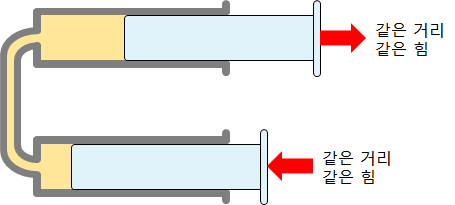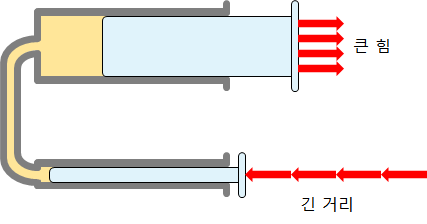Pascal's Principle
Pascal's principle is as follows.
"Suppose a closed tube filled with uncompressed fluid. Then, the pressure of this tube's inside is the same everywhere."
For example, If you press any part of the tube containing the toothpaste, the toothpaste will constantly come out. This is because the same pressure is applied to all parts of the tube.
Application of Pascal's Principle
Pascal's principle is used to generate large forces with little force.
Let's consider two cylinders with the same inner diameter area, as shown in the figure below. When you push or pull one of the pistons, the other piston moves to the same length. In this case, only the force's direction changed, and the magnitude of the force does not change.

If the inner diameters of the two cylinders are different, the moving distance also differs. According to the 'principle of work,' a cylinder that moves a short distance can generate greater force. The product of force and moving distance is always constant.

'Hydraulic cylinders' are often used when large forces are needed throughout the industry, like Automobile lifts, excavators, dump trucks that pick up the loader, and farm machinery.